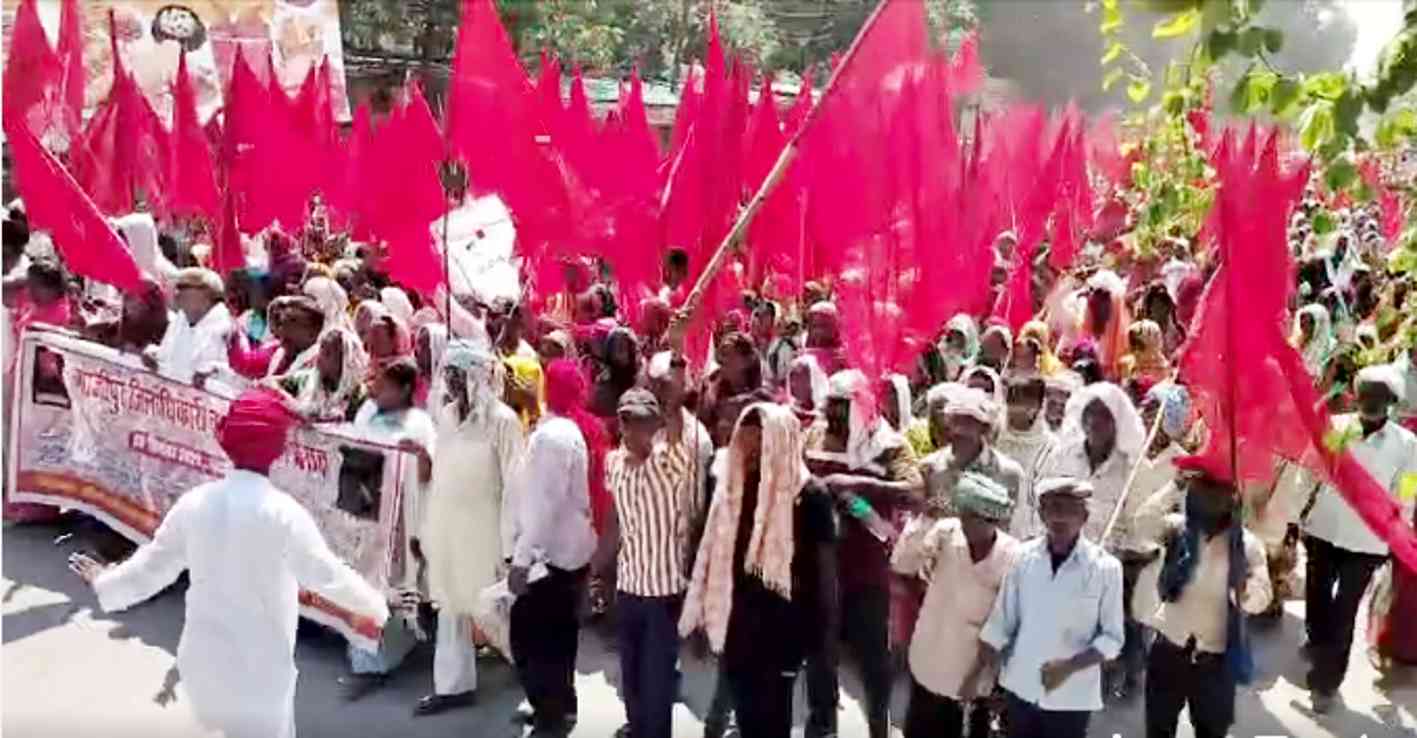AIARLA Holds Major Protest in Uttar Pradesh

On September 23, tens of thousands of rural poor in Uttar Pradesh, under the banner of All India Agricultural and Rural Labour Association (AIARLA) staged massive protests across district headquarters, demanding 200 days of work and Rs. 600 in wages under the MGNREGA scheme. The protest program also called for debt waiver for microfinance loans, cancellation of electricity bills, 300 units of free electricity, the return of funds deposited in the National Sahara scheme, and a complete halt to the undemocratic and unconstitutional "Bulldozer Raj."
The nationwide initiative by AIARLA witnessed widespread support and enthusiasm with impactful demonstrations taking place in 20 districts, including 10 district headquarters, eight tehsil headquarters, six blocks, and one gram panchayat secretary office.
In Ghazipur, preparations for the September 23 event began in August. A major march and assembly were planned, leading to meetings in 88 villages of Zamania Bhadoora, with attendance ranging from 50 to 300 villagers. Promotional materials, including 20,000 pamphlets, were distributed via vehicles. As a result, approximately 5,000 rural poor, along with 123 tractors and 80 tempos, gathered at the Ghazipur district headquarters for the protest program.
Speakers at the protest also emphasised housing and land for all the poor. Key speakers included Ishwari Prasad Kushwaha (State Secretary of the AIKM, Uttar Pradesh), Shashikant Kushwaha (District Secretary of CPI(ML), Nandkishore Bind (AIARLA District Secretary), and other prominent leaders.
In Chandauli, 1,000 rural poor, led by AIARLA State Secretary Anil Paswan and District Secretary Ramayan Ram, marched 5 kilometres to deliver a memorandum. In Ballia, an impactful march of 500 people occurred under the leadership of AIARLA National President Shriram Chaudhary, culminating in a submission of a memorandum at the tehsil office.
Mirzapur witnessed a march of 400 people led by AIARLA National Vice President Jeera Bharti and CPI(ML) State Secretary Sudhakar Yadav. Despite restrictions imposed by local authorities due to the Chief Minister's visit, the villagers succeeded in reaching the district headquarters to present their demands. Gorakhpur saw 300 rural poor gather at Nagar Nigam Park, led by AIARLA State Secretary Rajesh Sahni and other leaders, proceeding to the district headquarters for a robust protest. In Sitapur, 400 villagers, led by District Panchayat member Arjun Lal, protested at the district headquarters, while in Pilibhit, 400 people demonstrated under the leadership of AIARLA National Councillor Said Khan and AIKM District Vice President Afroz Alam.
Protests marches and meetings were also organised out in various other districts including Maharajganj, Deoria, Ayodhya, Varanasi, Azamgarh, Mau, and Kushinagar, with additional activities in Lakhimpur, Sonbhadra, Rae Bareli, and Jalaun.
In total, protests occurred in 27 locations across the state, with approximately 10,000 rural poor participating. This turnout highlighted the urgency of issues surrounding employment, debt relief, and housing rights, as well as the desire to escape the "Bulldozer Raj."
In a move to intensify the struggles for their demands, AIARLA state leadership said that on October 1, the current protest actions will take shape of a movement with protests to be organised in 500 gram panchayat secretariats across 53 blocks, focusing on the everyday challenges faced by rural communities and taking up the issues with local panchayat representatives.
- Rajesh Sahni

Charu Bhawan, U-90, Shakarpur, Delhi 110092
Phone: +91-11-42785864 | +91 9717274961 E-mail: info@cpiml.org

